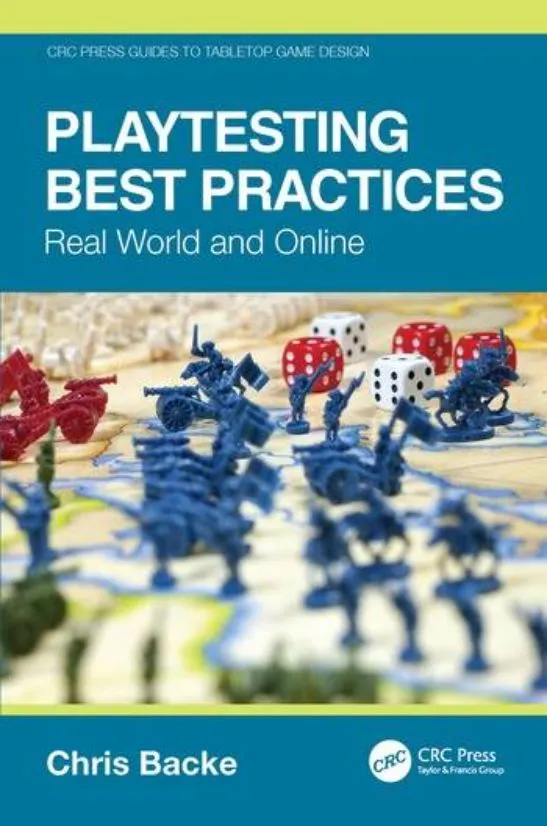My books
Playtesting Best Practices: Real World and Online
Available now!
Playtesting Best Practices: Real World and Online covers the complete journey of playtesting – the iterative journey to shape and refine tabletop games from raw ideas to balanced and fun games. This step-by-step guide embraces the process and celebrates the purpose of every step, from early self-playtesting to late-stage unguided playtesting, and offers the specific questions and practices the author has refined to perfect his own games.
This book is split up into four main sections, each with a distinct focus:
- Getting ready to playtest: Establishing goalposts, brainstorming, self-playtesting, getting organized, how to design a prototype, and writing rules. The focus here is starting good habits and establishing best practices, whether this is your first game or your hundredth.
- Playtesting in the real world: How to find playtesters, how to teach your game, what to do during the playtest, how to take notes and collect feedback, and being a great playtester yourself.
- Playtesting online: How to adapt to digital platforms, the best practices for playtesting online, how to use these opportunities well, and cautions about playtesting online.
- What to do next: How to iterate, additional ways to playtest your game, knowing when you’re done with playtesting, and choosing how to get your game out there.

111 Questions about Game Design
Coming early 2026
Bite-sized answers to the questions you should be asking.
When I started blogging about game design, I wrote about the questions I saw come up over and over again. Sometimes they weren’t quite the right question, so I reframed them to answer the question they were really asking.
This book is written for the newer game designer, though it’s accessible to designers of almost any level. Peruse it whenever questions come to mind, or read it straight through to answer lots of questions.
111 questions are answered across 11 sections:
- Finding & Developing Your Game Idea: How to generate, refine, and expand on game ideas.
- Theme & Setting: Bringing Your Game to Life
- Core Mechanics & Game Structure: Understanding game mechanics, player actions, and how to structure gameplay.
- Creating Your First Prototype: How to take an idea and make a physical version you can play.
- Playtesting & Feedback: How to test your game, gather useful feedback, and iterate effectively.
- Writing Clear & Engaging Rules: Best practices for writing and refining rulebooks.
- Polishing & Balancing Your Game: Fine-tuning mechanics, improving pacing, and balancing strategies.
- Player Interaction & Experience: How to design for different player counts, engagement levels, and emotional experiences.
- The Art & Presentation of a Game: How to approach graphic design, iconography, and usability in board games.
- Publishing Pathways & Next Steps: The pros and cons of self-publishing vs. pitching, and other options to consider
- Conventions, Pitching, & Networking: How to navigate game conventions, pitch to publishers, and make industry connections.

